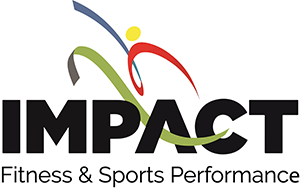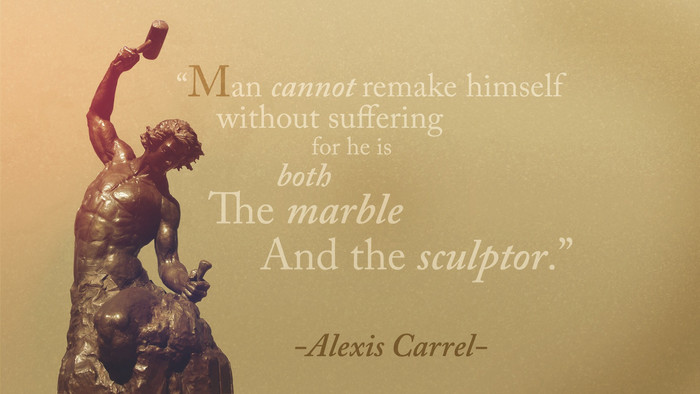“Man cannot remake himself without suffering, for he is both the marble and the sculptor”-Alexis Carrel
Introduction:
This quote by Alexis Carrel speaks to the idea that in order to become the person we want to be, we must go through a period of suffering, understanding that we are both the artist and the art. This same idea can be applied to the world of strength and conditioning, where training and performance are the marble and sculptor. Training builds character and helps us become the athletes we want to be, however the approach to training can vary significantly depending on the age of the athlete. Novice, intermediate and advanced athletes must all train in different ways in order to reach their individual goals. This article will explore the purpose of strength and conditioning and how the differences in training age affect the way an athlete must approach training and performance.
The Purpose of Strength and Conditioning Programs:
Strength and conditioning training should be seen as an ongoing process that requires a tailored program of progressively increasing stress, followed by adequate recovery in order to generate the desired adaptations to your performance in an athletic event. This cycle of increasing stress levels, followed by recovery and adaptation, should be seen as the cornerstone of any strength and conditioning program, as it is this combination that can help produce the best possible results. By ensuring that the program is created in such a way to provide both the accumulation of stress overtime, athletes can maximize their performance, and ensure that they are always primed to reach their potential.
Training verse Performance:
Training is a vital component in the success of any athlete during a performance in an athletic contest; it is the difference between achieving your goals and falling short. Performance tests the limits of training, pushing the athlete to their highest potential, while practice is the essential repetition of movement patterns that ensure accuracy and precision of the skill set that will be demonstrated in the performance. Training is a process, while performance is a showcase of the hard work, dedication and results that have been achieved through the process.
Training Builds Character:
The importance of training in building character cannot be understated. While everyone‘s genetic potential is different, the way one approaches, commits to, and perseveres through training reveals their true character. Training can be an arduous process, with many challenges and setbacks along the way. Yet, it is in the face of these obstacles that one‘s spirit is revealed, as it demonstrates their commitment to setting and achieving goals, their determination, and their discipline. In the novice, intermediate, and advanced levels the athlete is challenged– physically, mentally, and psychologically – all of which in order to get through require to push themselves beyond their comfort zone, and ultimately, it is through this process that their character is developed and strengthened. Training is thus an effective tool in helping to build character, as it allows one to take a good hard look at themselves and discover who they truly are when no one else is looking. The following will go through the details of the 3 stages in the training process.
Beginner: 3-9 months
The honeymoon or novice stage of weightlifting is an immensely rewarding experience, as it is a chance to learn new and exciting movements and build strength. This stage is often the most thrilling, as athletes can see remarkable improvement of up to 150–180 lbs in their lifts, becoming faster, more powerful, and gaining body awareness. The commitment and hard work put into this time will be rewarded, as complexity is low and small increments of 5 lbs can be added to each workout. This stage is also a great opportunity to develop psychologically and emotionally, as inexperienced lifters must learn to manage fear and apprehension and build the skill of focus. This is a time to take on new challenges and with dedication, see incredible progress and success. This is also where you can implement self-limiting exercises, that is exercises that make it difficult to get hurt as they are learning proper technique. The example that I like to use in this would be a 1-Arm DB Split Stance row versus a chest supported row. If you have trained beginner athletes one of the many challenges to teach them how to move their scapula correctly which is important for sports that involve throwing and running. Regressing to a chest supported row forces the athlete to stay upright, thereby causing proper recruitment of the movement being performed. Same movement, better quality. It may be good to teach the athlete how to brace his or her core separately in the program during this time.
–Focus on basic movements and exercises like squats, deadlifts, pushups, rows, and bench presses.
Begin with a low volume of training and gradually increase the volume as the athlete’s body adapts.
Use a simple linear periodization over a longer period of time, where each week the athlete increases the weight, reps, and sets slightly.
Intermediate: 9 months to 3 years
The intermediate stage of training is when you must dig deeper and push through any plateau or difficulty in order to make progress. It is often when you must find ways to challenge yourself beyond what you have done in the novice stage and look for unconventional ways to break through any barriers. This is when you must rely on your character and commitment to make progress, and it is often when you will prove to yourself that you are capable of more than you ever imagined. It is important to recognize that the periodization schemes of an intermediate trainee are different than those of a novice, and that you must find ways to challenge yourself and push through any difficulty in order to make progress.
Intermediate trainees can employ a variety of periodization approaches, depending on their goals. One of the most popular forms is undulating periodization, which involves rotating different loading parameters (e.g. intensity, volume, frequency, etc.) in order to avoid training plateaus. This allows the body to recover and adapt to different types of stimuli. Another popular approach is block periodization, which is similar to undulating periodization, but with more focused blocks of training based on specific goals. This approach is often used when preparing for a competition or event. In addition to these methods, intermediate trainees can also use the Prilepin‘s chart, which outlines the optimal number of sets and repetitions for each weight range. This chart can be used to adjust the intensity of the weights used and optimize the training program.
–Focus on more advanced exercises like Olympic lifts, power cleans, and plyometrics.
Start with a moderate volume of training and adjust the volume depending on the athlete’s response.
Use more complex periodization methods such as block periodization and undulating periodization, where the intensity and volume is varied throughout the week or month.
Include more accessory exercises to target weak areas.
Advanced: 3 years-present
The advanced stage of weightlifting and training is very particular and detailed. It is all about honing in on specific techniques and movements until they are perfected. This can be a long and arduous process, but the rewards are profound. This is similar to mastering a skill or discovering a passion in life. It takes dedication, hard work, and attention to detail to truly excel in anything. The same dedication, hard work, and attention to detail that is required to excel in weight training can be applied to other areas of life.
During this stage, periodization becomes critical. Periodization is the practice of breaking down a training program into multiple phases over a period of time. For these advanced trainees, periodization should be implemented with a focus on the long–term development of the athlete, or a macrocycle. It should involve a combination of various training methods, such as strength training, plyometrics, speed and agility drills, and cardiovascular conditioning, in order to maximize the athlete’s performance.
When implementing programming for advanced trainees versus intermediate trainees, there are some key differences to consider. Advanced trainees require a more complex program with higher intensity, higher volume, and a greater focus on skill development. This program should also include periodization and periodization of intensity to ensure that the body is not over–stressed. This is the part in the athletes training career where programming becomes a double edge sword, and you have to more so focus on specific qualities, or their weakest link if you will. For example, the athlete is strong at this point, focusing speed will be important, that is moving the weight fast. This is the time where devices such as tendo units should be utilized Periodization becomes critical, and recovery is what will elicit improvement, or lack thereof will become the downfall. As the coach, it is important to recognize the stage of training the athlete is at. Everything the athlete does matters at this point in their career. Intermediate trainees require a simpler program with lower intensity, lower volume, and more focus on the basics of strength and conditioning. This program should also be periodized, but with less variation in intensity. Ultimately, programming for advanced and intermediate trainees should be tailored to their individual needs and goals. Both should be built on a foundation of proper technique and progressions and should include a variety of exercises and drills to ensure that the body is being challenged and conditioned properly.
In conclusion, the journey of Training is one that involves a great deal of persistence and dedication. Novice, intermediate, and advanced lifters all bring something unique to the table, and as an athlete progresses through the stages of their weightlifting career, they become more and more adept at the practice. This progress not only brings success in the gym, but also helps to make the individual the best version of themselves physically, emotionally, and spiritually. With commitment to the process, anyone can become a champion in the weightroom and beyond.

